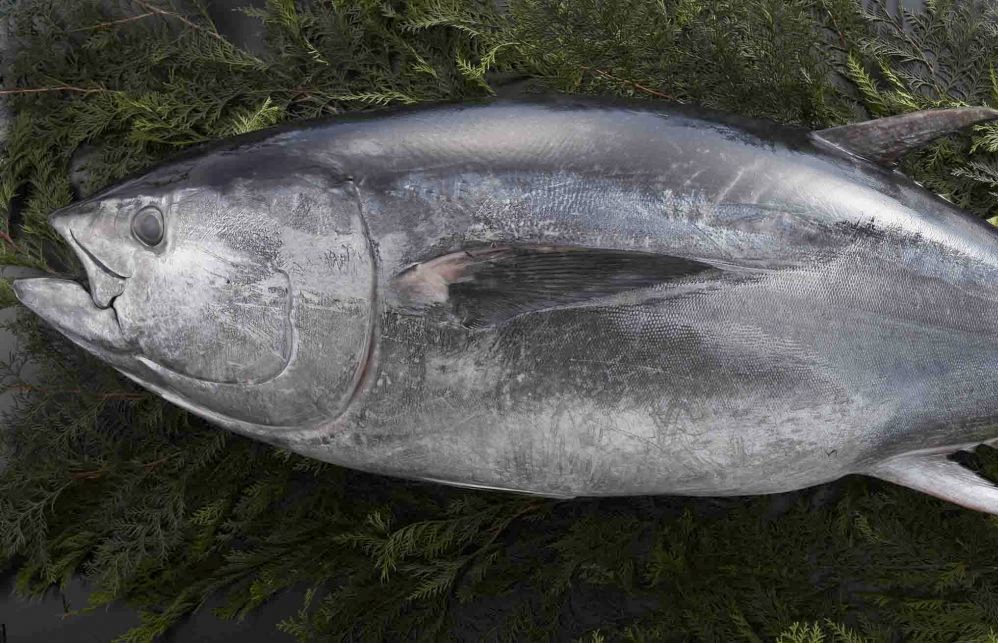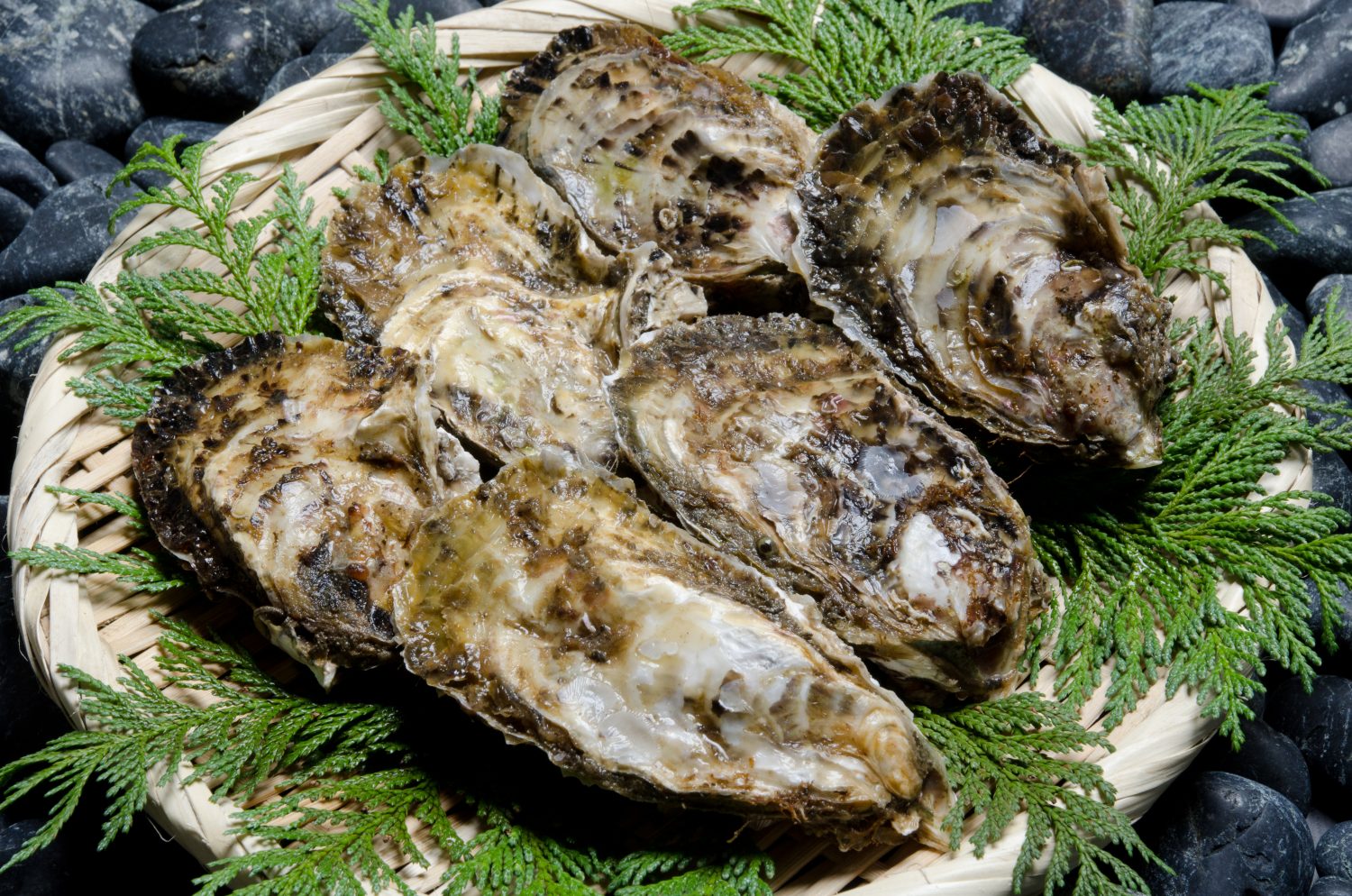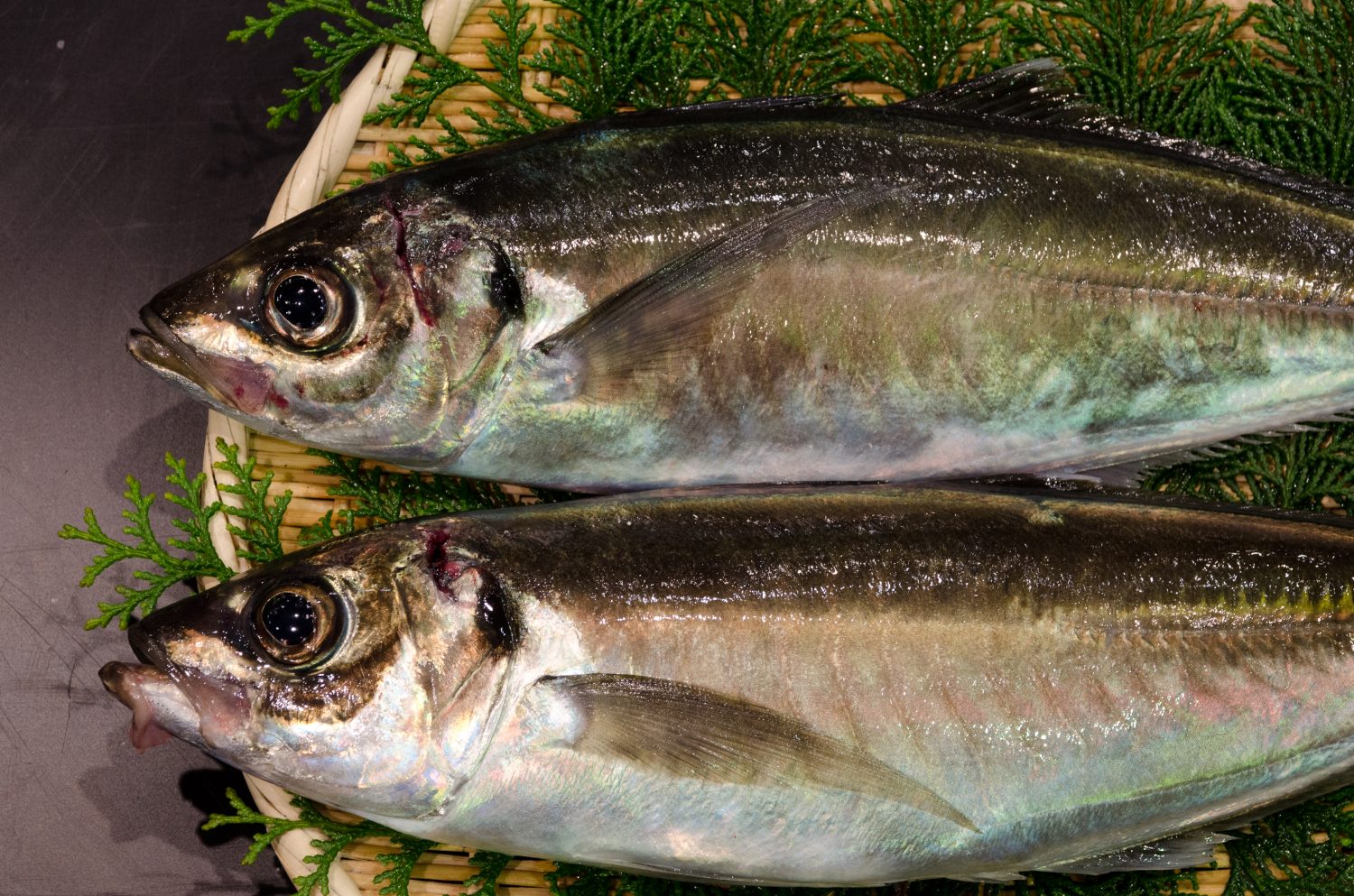Yellowtail(Kabosu Buri)

Quality that speaks for itself ‘OitaBuri’ (Yellowtail)
The buri is a fish with different names in its various stages of life, and is considered an auspicious ingredient that is essential to celebratory occasions. Oita enjoys success in buri farming, and is ranked third in terms of production volume across Japan. Buri raised Usuki, Tsukumi and Saiki live in the excellent conditions of the Bungo Channel, and are praised for their firm flesh and finely distributed fat. While the ‘Toyo no Iki Buri’ in these regions have long been sold around Japan, the seasonal Kabosu Buri, only available in winter, made its debut in 2010. Raised with the Oita specialty citrus ‘kabosu’, Kabosu Buri is a delectable union of freshness, fragrance and beautiful coloring. The beautiful dark red portions of the flesh are not just about looks ? Kabosu Buri can stay fresh for up to 40 hours longer than buri that are raised with ordinary feed. Once you take a bite of the fatty yet refined and refreshing Kabosu Buri, you can never get enough.
Seas that raise the Kabosu Buri
The Kabosu Buri is a new brand of fish that is raised with ‘kabosu’, Oita’s specialty citrus. One of the characteristics of the buri is that its flesh’s dark red portions discolor more easily than those of the hiramasa (gold-striped amberjack) and kampachi (great amberjack), and while the flesh can retain its flavors for several days, prices fall as appearance changes over time. In its research to counter this issue, the Oita Prefecture has developed a fish feed that contains kabosu citrus juice. Beside preventing discoloring with its antioxidant properties, the polyphenol and vitamin C found in kabosu also reduce the flesh’s fishy odors. The Juho Fisheries based in Usuki (represented by Mr. Sasaki Kensho) farms buri as well kampachi and hiramasa in the offshore waters of Sashiu. Including Kabosu Buri, the fish are divided in corves by different stages of maturity and looked after with great care. To raise the 40g juveniles to 5~6kg adults ready for shipment, factors such as sea water temperatures, the fish’s movement, the fish’s appearance and the quantity, contents and distribution times of the feed must be monitored with minute attention. In the case of Kabosu Buri, the powdered form of kabosu juice is added to fish feed made from mackerels and sardines. According to Mr. Sasaki, kabosu also has the effect of producing fish that have smaller internal organs and more edible parts.
Fish feed, the decisive factor to taste
The ocean-fresh Kabosu Buri glows with a beautiful luster all round, its solid body telling of its firm texture. The fish’s fat delivers quite the impact on those who gut and clean it, since the knife moves through the flesh in a surprisingly swift manner when compared to that of farmed buri. Thanks to its clean and refreshing fattiness, the Kabosu Buri has been commended as a fish that can be enjoyed even by those who generally dislike buri sashimi. ‘We want more people to savor the wonderful tastes of buri through the refreshing and easy-on-the-palate Kabosu Buri,’ said Mr. Sasaki with anticipation. It can be said that Kabosu Buri is a hybrid of farmed buri and kabosu, two of Oita’s representative specialties. With the goal of turning Kabosu Buri into something on par with the ‘Seki Aji, Seki Saba’, the producers’ challenges have only just begun.
Rich in regional colors: Kyushu’s most spacious town
Saiki is a city situated in south-east Oita. The region contains a rich array of landforms including mountains, open plains based at the downstream of the Banjo River and coastlines comprised of complex networks of rias coasts. The region offers many sites with unique natural highlights that can be enjoyed by visitors, such as the nationally designated natural monument Onagara Karst Cave with its slanted scapolites, the Nippo Kaigan Quasi-National Park with its mosaic of rias coasts, and many more.
Oita’s top city for marine produce
In the waters of the Bungo Channel off the coasts of Saiki, the waves of the Seto Inland Sea and the southern Kuroshio Current collide against one another, creating a treasure trove for various marine produce throughout the year. When it comes to the fisheries industry, Saiki relies on the ocean’s abundance and incorporates its local network of complex rias coasts in the field of aquaculture. Locally farmed hirame (olive flounder) in particular enjoys a high degree of success, making up for more than 80% of Oita’s total production volumes.
Yellowtail(Kabosu Buri)
- Shipping time
- October~March
- Transportation form
- Refrigerated
- Contact
- Oita Fisheries Cooperative Association : Keisuke HASHIMOTO


